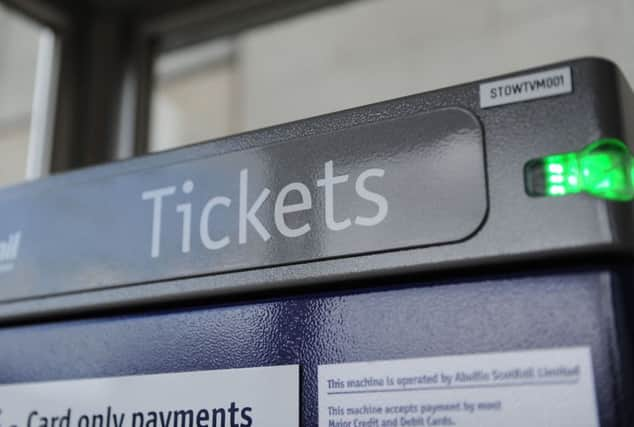The myth of rail fare ‘hikes’ masks the need to highlight the best deals


It must be late summer - the first of three annual wails of protest over rail fares going up.
Commuters and politicians eagerly grab the opportunities presented by the publication of the July inflation rate which determines the next increase, confirmation of the rises by train operators in the autumn, and their introduction as an unwelcome return-to-work jolt in January.
Advertisement
Hide AdAdvertisement
Hide AdIt’s an easy target, but perplexes me because the hike for most fares is pegged to the retail prices index, which itself is an average of how much other things are going up. So why single out the cost of train travel?
Of course, in consumers minds, the price of tickets can seem high because it is highly visible when the various elements that make up the cost of motoring are not.
Most significantly, while the most obvious motoring cost - fuel - has yo-yoed over the last decade, the average petrol price in Scotland is virtually unchanged on a year ago (at 129.3p a litre), according to the AA’s monthly surveys.
But more and more of us are travelling by train north of the Border - we’re nearing an astonishing 100 million journeys a year - and so how much we pay for rail is likely to become an increasingly important issue.
It’s true the Scottish Government has capped off-peak fares at 1 per cent below inflation for several years, which it said made ScotRail tickets an average of one fifth cheaper than the rest of Britain.
However, getting the cheapest fare can still be a nightmare, despite The Scotsman highlighting anomalies for years.
Yesterday, a helpful ticket examiner offered me two tickets for my journey between the west end of Glasgow and Edinburgh rather than one, saving me 40p. If that was a regular trip, it would soon mount up.
I understand it’s because fares in the west of Scotland - where rail journeys are concentrated - used to be set by the former Strathclyde Passenger Transport (SPT), with increases often lower than the rest of the ScotRail network.
Advertisement
Hide AdAdvertisement
Hide AdSo travelling between parts of Strathclyde and elsewhere in Scotland crosses old fare zones that still haven’t been completely removed.
But I’m told it’s not even as simple as “split ticketing” to get the lowest fare. In some cases, you could be paying more by buying two tickets for separate parts for your journey.
Frustrating as this is, it’s a difficult one to resolve, as there will be winners and losers when fares are adjusted to remove anomalies.
However, more infuriating is the lack of transparency over how to get bargain fares, such as being able to take your child for just £1 return.
Despite ScotRail urging passengers to “buy before you board”, you cannot buy these “Kids for a Quid” fares from a ticket machine - many stations don’t have ticket offices - or online.
ScotRail says this is to prevent fraud, but I haven’t come across anything while booking tickets by either method that points out you can buy the Quid fares from a ticket clerk or on board. Some parents will have wasted money by buying half-price child fares instead.
When I raised this, ScotRail said it was discussing the “visibility” of such information with the firms which supply its ticket machines.
I’ve criticised ScotRail for abolishing free travel for children accompanied by adults, but the £1 fares are still a good deal. If families might be deterred from travelling by rail by all the heat generated by fare increases, maximising awareness of such bargains is vital.